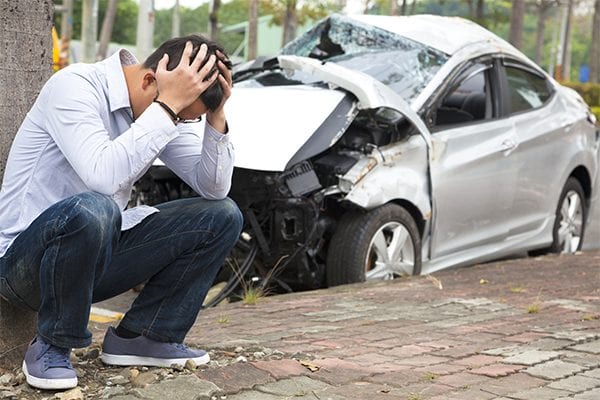
State Attorney General Lori Swanson vowed to take tough action against the “epidemic” of distracted drivers on Minnesota roads.
The Gopher State already has a rather broad cell phone law. But Ms. Swanson wants to mandate hands-free devices, toughen the penalties for distracted driving, and include a license suspension provision for repeat offenders. In other words, the distracted driving law should more closely resemble the DUI law, she said. The issue is not just limited to young drivers, she added. According to a 2017 report, drivers aged 30 to 49 represented almost half of all texting-while-driving citations.
Between 2013 and 2017, distracted drivers caused about a fifth of the fatal car crashes in Minnesota.
What is Distracted Driving?
The distracted driving laws in most states, including Minnesota, are device-based. They focus exclusively on handheld cell phones. Indeed, these devices combine all three forms of distraction, which are:
- Manual (taking a hand off the wheel),
- Visual (taking your eyes off the road), and
- Cognitive (taking your eyes off the road).
A few states have broader, behavior-based laws. Until very recently, Georgia had one of the broadest distracted driving laws in the country. In 2015, officers cited a Marietta man for eating a cheeseburger while driving. Cobb County prosecutors subsequently dismissed that case, and the Georgia legislature subsequently amended the state’s distracted driving law.
Safety advocates routinely push for behavior-based laws, but many people consider them intrusive. So, most states focus on device-based laws. One of the major problems with these kinds of laws, according to top Brainerd personal injury lawyers, is that there are too many gaps.
For example, there is considerable evidence that hands-free devices are not risk-free. In fact, they may be more hazardous than hand-held cell phones. When people use hands-free gadgets, they are still visually and cognitively distracted. Moreover, researchers have identified a hands-free latency effect. It takes most drivers at least twenty seconds to re-engage after they hang up a hands-free device.
Nevertheless, even an incomplete distracted driving law is certainly better than no law at all. Furthermore, the Minnesota Attorney General’s proposed distracted driving law could make it easier to obtain compensation in court.
Negligence Per Se in Distracted Driving Cases
Under current Minnesota law, it’s illegal to text and drive. “Texting” includes any text-based communication. That includes not only person-to-person text messages but also emailing and instant messaging. Minnesota’s prohibition even extends to posting on social media and some other Internet use.
If a tortfeasor (negligent driver) violates the distracted driving law, or any other safety law, the negligence per se shortcut usually applies. Brainerd personal injury lawyers may use this doctrine if:
- The tortfeasor violated a safety law, and
- That violation substantially caused the crash.
Typically, the negligence per se rule establishes liability as a matter of law. Limited defenses are available, such as urgent justification. But lots of luck with that.
If the victim sustained a serious injury, damages in a negligence per se case include compensation for both economic losses, such as medical bills, and noneconomic losses, such as pain and suffering. Minnesota law defines a “serious injury” as one which involves more than $4,000 in medical bills.
Brainerd Personal Injury Lawyers and Distracted Driver Negligence
It’s still possible to obtain such compensation in non-device cases. Compensation may even be available in situations like the aforementioned burger-eater. In non-device cases, victim/plaintiffs must establish the five elements of a negligence case, which are:
- Duty: In Minnesota, most drivers have a duty of reasonable care. This legal responsibility is basically a lawyerly version of the Golden Rule which many Brainerd schoolchildren once had to memorize.
- Breach: Tortfeasors (negligent drivers) breach their duties when their conduct drops below the standard of care. The jury decides where to draw that line. For example, talking to a passenger is technically distracted driving (visual and cognitive distraction). But most Crow Wing County jurors would not consider such behavior to be a violation of the standard of care.
- Cause-in-Fact: There must be a direct connection between the tortfeasor’s conduct or misconduct and the victim/plaintiff’s damages.
- Proximate Cause: This is a legal term which basically means “foreseeability.” If a distracted driver veers off the road, hits a light pole, and that pole hits a pedestrian, that’s a foreseeable consequence. If a doctor makes a medical mistake during surgery on that pedestrian, that’s not a foreseeable consequence.
- Damages: The damages must be physical, because near misses and close calls usually do not count. However, as outlined above, compensation is available for intangible losses, such as emotional distress. Sometimes, the zone of danger doctrine does expand. Parents who see their children hurt in car crashes are usually eligible for compensation.
In both negligence and negligence per se cases, Brainerd personal injury lawyers must establish liability by a preponderance of the evidence (more likely than not). That’s the lowest standard of proof in Minnesota law. Sometimes, the victim/plaintiff’s testimony, when coupled with the accident report and medical evidence, is more than enough. Witness statements and electronic evidence, perhaps from the car’s black box data recorder, are also usually available if needed.
Work with an Experienced Attorney
Distracted drivers often cause serious injuries. For a free consultation with an experienced Brainerd personal injury lawyer, contact Carlson & Jones, P.A. Home and hospital visits are available.

